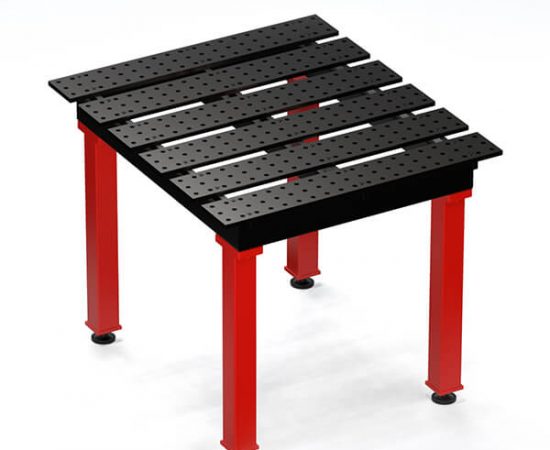Blogs By Cyclotron
Materials used in Welding table
The welding procedure generates very high temperatures that melt the materials and form a joint. Though it is not mandatory, performing welding operations on a welding table has its own advantages. Apart from additional accessories and attachments of the welding table to make your job easier, a welding table should be good enough to withstand high temperatures and endure heavy loads and hammering produced during welding. The properties of a welding table depend upon the type of material with which it is manufactured.

What makes a good welding table?
- The welding table should be strong and durable enough to withstand heavy and repeated loads for a long time without any failure or distortion.
- It should be easily cleaned and doesn’t hold back any dirt particles or spatter obtained during welding.
- The material should conduct electricity to provide grounding to the welding table.
- The manufacturing material is chosen such that it doesn’t react with or affect the workpiece on welding. Therefore, welding of a few materials requires a different welding table.
Why metals are preferred over wood in welding table manufacture?
Wood is the cheapest available material for manufacturing. Yet, a welding table cannot be made of wood. The reasons include
- Wood being a highly flammable substance catches fire easily. Hence the workshops with wooden welding tables are at higher risk of fire accidents. A metallic welding table is a better option. It absorbs snd di If you have a small workshop or can’t afford a metallic welding table, place a metallic top or plate on a wooden table and perform welding.
- A lot of hammering takes place on a welding table. a good welding table should be durable and strong t withstand all these repeated loadings for a long time without failure.
- Metals conduct electricity hence possible to ground. This is not possible in the case of wood as it is a poor conductor of electricity.
Materials used in welding table
Though different weld surfaces are used for welding different materials, below are the most commonly used materials in welding tables manufacturing
- Carbon steel
- Stainless steel
- Aluminium
- Cast iron
Of them, carbon steel is the widely used material for making a welding table. Carbon steel is an alloy of iron and carbon. Next, the best option is a Stainless Steel welding table. It has chromium content which provides corrosion resistance to the table. The higher is the chromium content in the stainless steel, the better will be the corrosion resistance and shiny surface.
Cast iron mainly grey cast iron acts as an excellent surface for welding. Its high vibration damping capacity absorbs any vibration that occurred during the process and keeps the work stable. Also, it doesn’t allow any weld spatter to stick on it ensuring clean welding.
For welding of carbon steel workpieces, a welding table made of carbon steel does the work well. For welding of stainless steel jobs, an aluminum-copper alloy that is non-ferritic is suitable in making a welding table. In the case of stainless steel parts, ferritic surfaces are to be avoided. Thus, if carbon steel is used, the material sticks to the welding table and causes pitting and scratches. An aluminium-copper table has high tensile strength and low surface hardness so that there is no possibility of scratches or pitting. It has high thermal conductivity to dissipate heat quickly and also prevent spatter from sticking to the welding table.
Conclusion
Apart from welding table manufacturing material, there are other factors that contribute to safe welding. Any surface that is wet or dirty should be avoided. Also, avoid flammable or other dangerous materials in the manufacture to protect your workspace.
